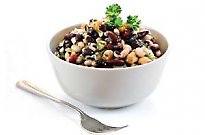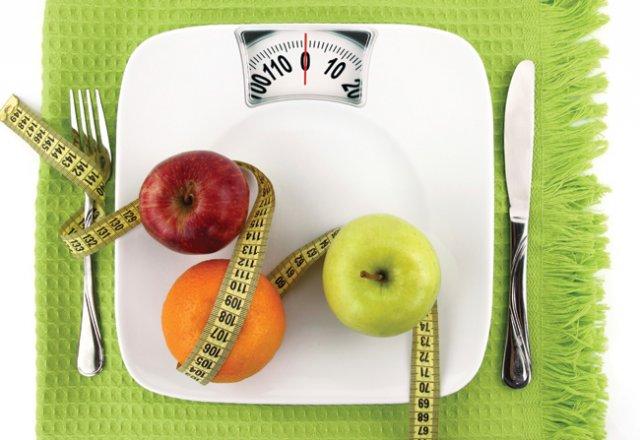
Diets of the past, present and future

From Pritikin to Paleo, the fad diet has come a long way, but has anyone lost weight? David Goding uncovers the big business of dieting.
Not all diets are successful and many fail before they even make it to the book launch. But the one thing they all have in common is they are all revolutionary. Some may even be based on solid principles and actually help people to lose weight, for a while. But only five per cent of dieters actually keep the weight off, and many end up putting back more than they took off.
“As a culture, we’ve gone way overboard trying to beat the bulge,” says Harley Pasternak, weight loss expert and author of his own dieting book, The Body Reset Diet.
“We’ve spent too much money, time and effort trying to get thin. We’ve gone on all sorts of diets – low cal, low carb, low fat – in the hopes of achieving our dream body. We’ve popped endless pills and cleansed our insides until nothing’s left. We’ve eaten according to our blood type, subsisted on grapefruits for months on end and come very close to starving ourselves.”
On the fringes we have the very helpful scientists telling us that dieting slows your metabolism, reduces your sex drive, results in muscle atrophy, increases cardiovascular risks and, disturbingly, can even make you dumber. But that’s not enough to distract us for the ultimate weight loss goal of thinness is it?
“Fat is ‘bad’, and dieting is the new norm,” says Dr Louise Foxcroft, author of Calories and Corsets: A history of dieting over 2000 years, “but few people in recent decades have had what me might call a ‘normal’ relationship with food, one untouched by the constant barrage of diet news, fast foods and a food environment radically different from what it was even just a generation ago.
“If we look further back than that – centuries back – it becomes obvious that much of the dieting industry is fraudulent, yet still we follow the latest fad, hoping for some quick and easy weight-loss miracle because slimming down is hard, tedious work.”
The distant past
Our history of dieting goes back so far we may now be genetically evolved to jump from one diet to the next. It’s survival of the fittest, it’s just that the diets themselves don’t last so long.
It can all be traced back to Hippocrates – the esteemed father of modern medicine – who recommended light and emollient foods, hard work, sea water enemas, walking naked on a regular basis and vomiting once a day. Suddenly, the diet industry was born.
Jumping ahead to the 1800s, starvation was the vogue as the upward-looking middle classes strived to achieve the emaciated sophistication associated with Victorian femininity. Lord Byron added vinegar and water into the mix, which would lead to vomiting and diarrhoea for immediate effect.
By the early 20th century dieters were encouraged to not swallow their food at all. American health-food enthusiast Horace Fletcher advocated chewing every mouthful 32 times – to extract the nutrients – and spit out the rest. The Great Masticator – as he was known – lived by the compelling motto of ‘nature will castigate those who don’t masticate’.
Welcome to the ’80s
Fortunately, dieting did get back to actually swallowing food, albeit with plenty of stuff cut out. By the 1980s, the Pritikin diet went nuts around the world. Of course, you weren’t permitted to eat any nuts while on the diet, which emphasised low fat, no oils, no butter or marg, no salt or sugar but plenty of fruits and vegetables. The diet formed a big part of demonising fat in our diet, which has a legacy felt to this day, long after Pritikin has faded into the tacky ’80s sunset.
The other heavyweight of the ’80s, Robert Atkins, said fat was okay, it’s carbs you really need to avoid. With more staying power than most, the Atkins diet eventually gave birth to a host of other low-carb diets that have refined – or at least repackaged – the original idea.
In truth, Atkins wasn’t actually the first to sell the low carb approach to the world. That honour goes to Dr Herman Taller who, in the 1960s, said you could eat as many calories as you like as long as you avoid carbs. The catch was you needed to wash it all down with three ounces of vegetable oil.
From the ’90s to now
In the 1990s it was the Zone Diet, which called for a complex ratio of 40:30:30 carbs, protein and fat for every meal. This ratio apparently puts you in the perfect weight loss zone, balances your hormones and even boosts heart health.
By the turn of the century we were back with the new low-carb diets in the form of the South Beach Diet and the Dukan Diet, otherwise known as the Princess Kate Diet. The number-one diet in France, Dukan outlines a four-phase approach of attack, cruise, consolidation and stabilisation.
The first phase has you eating virtually only animal protein, and the final stabilisation phase – which is meant to last the rest of your life – outlines six days of ‘normal’ healthy eating followed by one day of protein only. It’s still remarkably popular despite the British Dietetic Association voting it the number one diet to avoid for the last three years.
Living in the present
The current excitement diet goes back to a simpler time when we didn’t have a choice of what we ate. The Paleo Diet, or Caveman Diet, is based on what our early Palaeolithic ancestors ate in pre-agricultural days. So,there are no grains – including rice – allowed, and no dairy or legumes, but you do get plenty of fresh fruit and vegetables, a perennial dieting favourite. Nuts become very important, as does almond meal to substitute for flour. Admittedly, it does seem to get results but it can be difficult to sustain, and virtually impossible if you’re a vegetarian.
Food intolerance diets have also become big business, targeting a growing number of people with digestive complaints.
The Low FODMAP diet is proving to be of great help to the one in seven adults now experiencing irritable bowel syndrome. Standing for fermentable oligo-saccharides, disaccharides, mono-saccharides and polyols, a low FODMAP diet sounds complicated because it is. To start with you’ll need to carry around a long list of categorised foods until you get used to what you can and can’t have. You’ll need to avoid vegetables such as onions, cabbage and mushrooms and all wheat products.
Similarly, gluten-free diets emphasise the avoidance of the evil wheat grain. Important for all sufferers of celiac disease, it may also be of benefit for those who experience minor gluten or wheat intolerance, which many experts believe is on the rise. Interestingly, fashionable gluten-free products are going through the roof in more affluent areas and shunned in working class areas.
The most radical weight loss trend of the moment would have to be HGG. Standing for human chorionic gonadotropin, it also includes a four-phase fat elimination protocol. The first phase lasts for two days and you can literally eat as much food as you like, especially fats. In phases two and three you reduce calories to only 500 a day and take regular HCG homoeopathic drops, which provides unprecedented access to fat stores and controls your confused appetite. Originally you were injected with HCG sourced from the urine of pregnant women but this has now been banned.
Three weeks later you’re ready to return to normal phase-four eating with rapid weight loss achieved. The trick is keeping it off.
The future of dieting
So, where to now for the dieting industry? Haven’t we already exploited every conceivable dietary angle? Well, yes, that’s why we’re going back to starving ourselves. But this time it’s all about selective, regular, sustainable fasting, and with no vinegar or spitting out of food involved.
It appears that the supporters of the 20:4, 16:8 and the slightly simpler 5:2 fasting diets are just getting warmed up.
“I see fasting as the future of weight loss,” says Amanda Hamilton, nutritionist and author of Eat Fast Slim. “If I’m right and fasting becomes the next big thing in dieting, what will happen? Well, fasting is already rapidly gaining in popularity and when a trend begins – particularly a global trend – newspaper headlines don’t necessarily get all the facts right. And when a trend imbibes the collective consciousness, particularly in weight loss, you can guarantee that money-wasting gimmicks will follow.”
And how will our bodies cope with all that starving, I mean fasting?
“Most of us are given an unbelievably complex and resilient body to look after and maintain, says Donna Aston, author of The End of Dieting. “Consequently, over a lifetime, we overfeed it with poor food choices, torture it with bouts of over-restrictive dieting, deprive it of essential nutrients, stuff it with processed carbs, neglect to take it out for regular exercise, and generally don’t consider any form of maintenance until it begins to fall apart.”
At which point we simply look for another diet.


